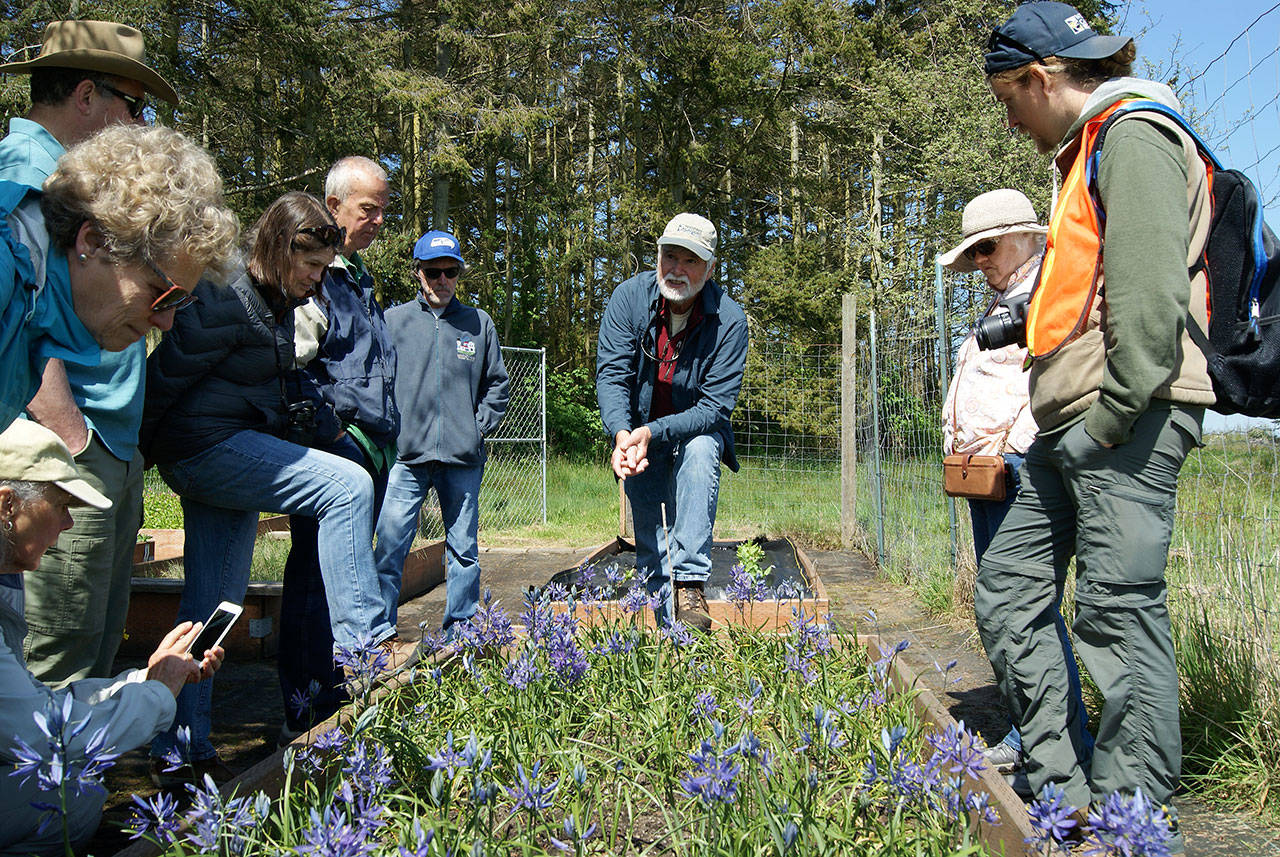It takes sunlight, water, soil and blazing fire to keep these plants happy.
A disappearing type of land called mesic “wet prairie” land is home to a number of plant species that only regrow healthy after fire has scorched the earth.
It takes hard work and careful planning to preserve these ecosystems, and the Whidbey Camano Land Trust has been doing so for the past 13 years at the Admiralty Inlet Natural Area Preserve in Coupeville.
Last Saturday morning, consultant biologist Mark Sheehan and stewardship specialist Kyle Ostermick-Durkee led a group of nine land trust supporters on a tour through the 7.5-acre grassland prairie field in search of a plant called the golden paintbrush.
The golden paintbrush, a federally threatened species, only grows in 12 spots in the world.
Two of those spots are in the Admiralty Preserve. Four more sites are found elsewhere on the Whidbey Island.
Why is the golden paintbrush important, besides being beautiful?
“It is a critical food source for another endangered species, the Taylor’s Checkerspot butterfly,” Ostermick-Durkee said. “And it’s part of our natural heritage. It’s a gorgeous plant.”
You can’t see the golden paintbrush just anywhere, so local nature-enthusiasts should feel fortunate if they see one in the wild, according to Ostermick-Durkee.
“Whidbey island is lucky to have a large proportion of what is left of it,” he said. “It’s not like planting a tree, where you can plant a tree without a forest.”
“You can’t plant a paintbrush without a prairie,” Ostermick-Durkee said.
Since purchasing the 86-acre Admiralty Preserve, crews have burned the prairie field several times and planted thousands of plants. In total, there are only 80 acres of prairie land on Whidbey Island.
Other colorful plants in the field included white chickweed, yellow buttercups, purple camas and several varieties of grass. Sheehan described some of the histories of the plants, which were utilized by Native Americans in the past, such as camas for food.
He showed supporters the land trust’s nursery with 13 garden boxes, where they cultivate each type of plant in order to gather seeds to plant more in the field.
Some animals that use prairie fields include chipmunks, garter snakes, bees, coyotes, rabbits, and “tons of birds,” Sheehan said, such as sparrows, goldfinches, bald eagles, owls and northern harriers, which hunt the prairie’s voles. “The voles have a lot of enemies,” he said.
Preserving prairie land may take a lot of work, but to Sheehan, it’s worth it.
“There’s an inherent beauty to them,” he said. “And ultimately, it’s a moral question of allowing other creatures to live alongside us.”
Land trust supporter Suzanna Dentel of South Fidalgo found the tour informative and applicable to her own life. She plans to plant the native species that she learned about in her own yard.
“It’s amazing all the work it takes to bring nature back,” she said.


